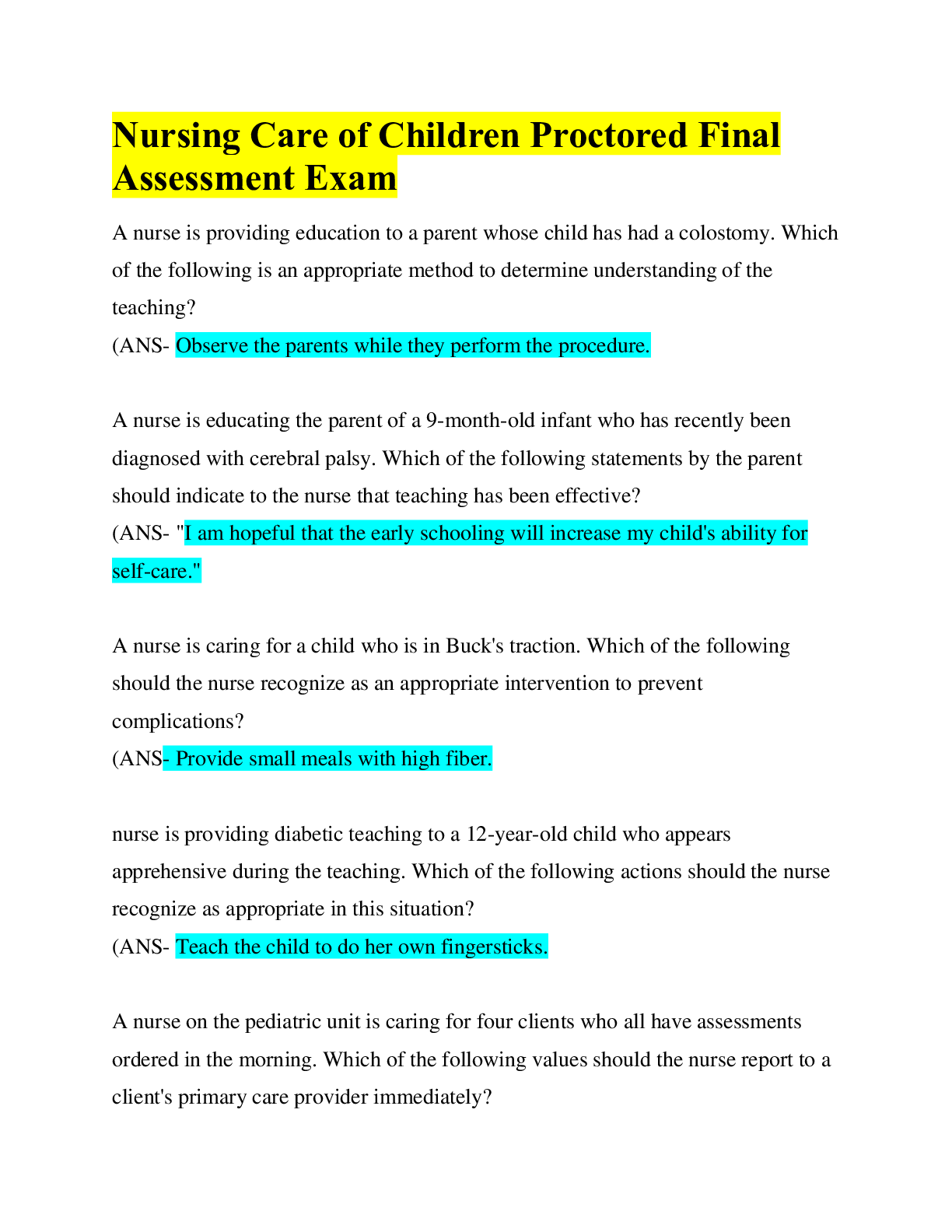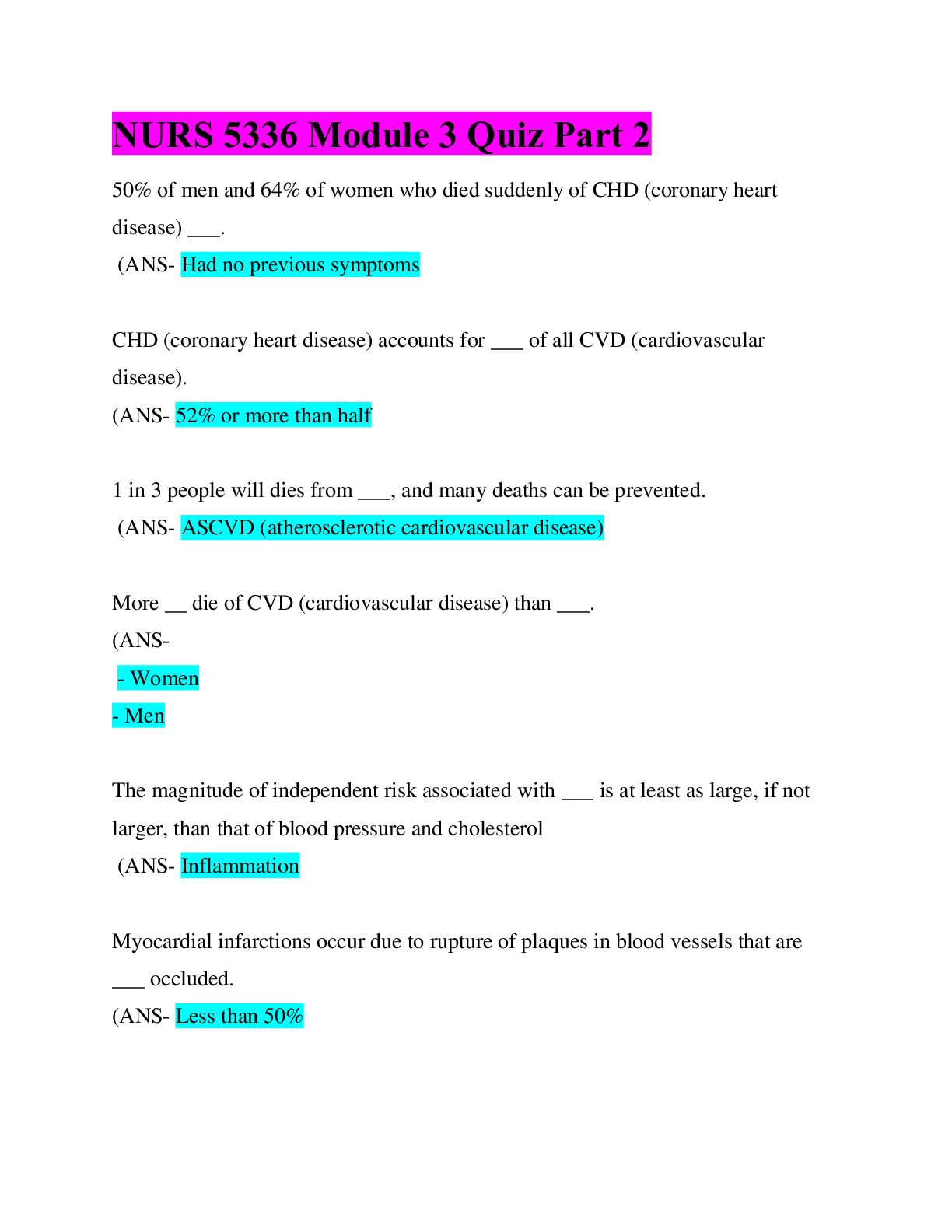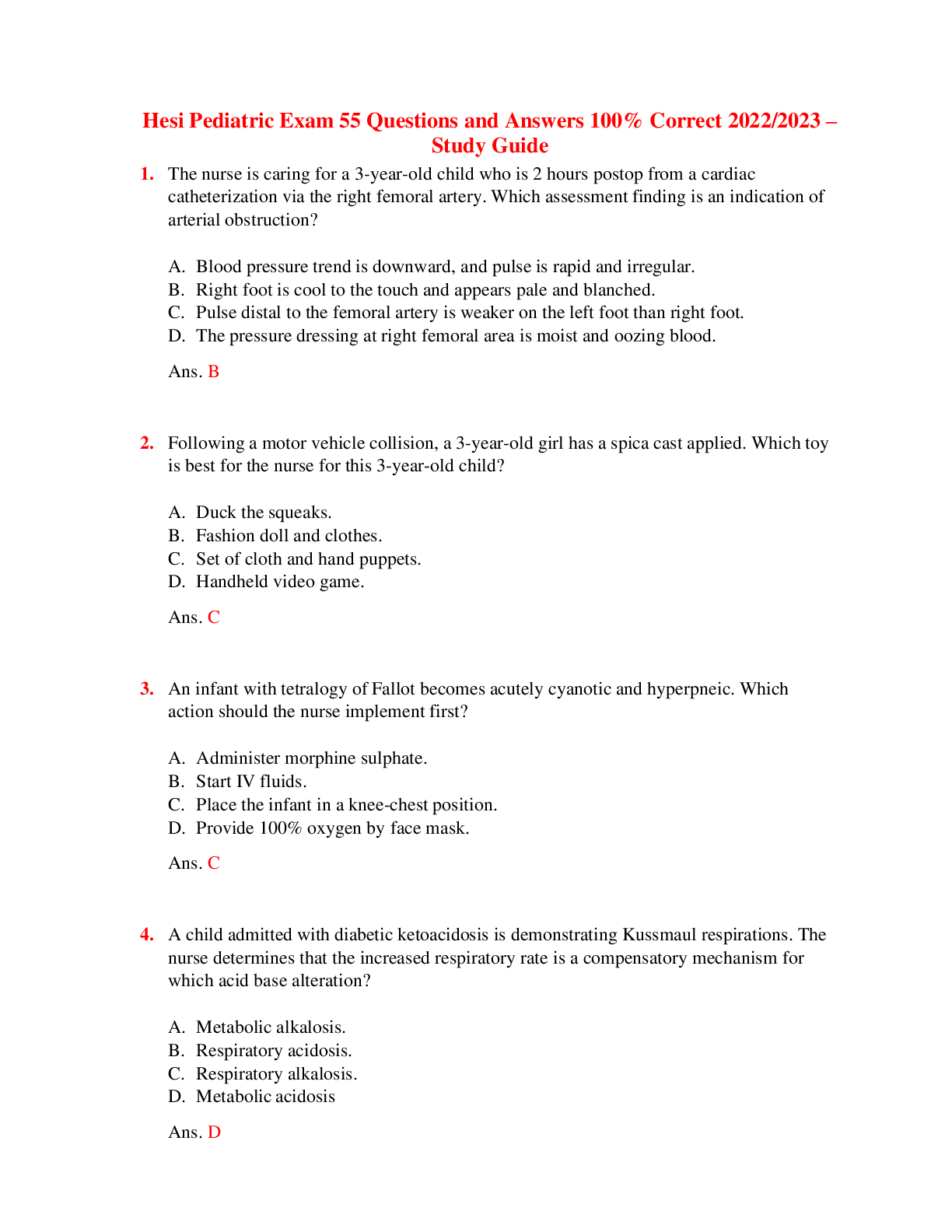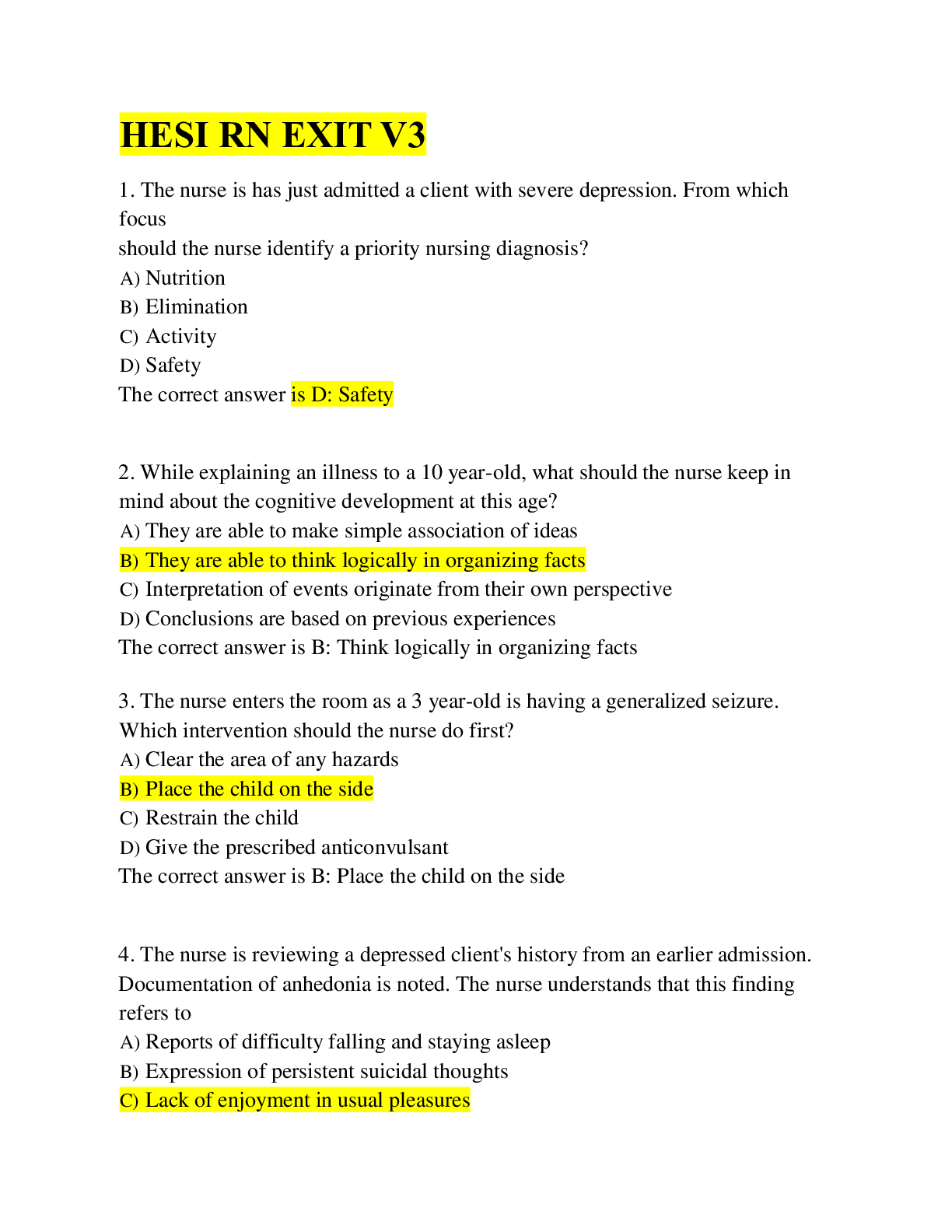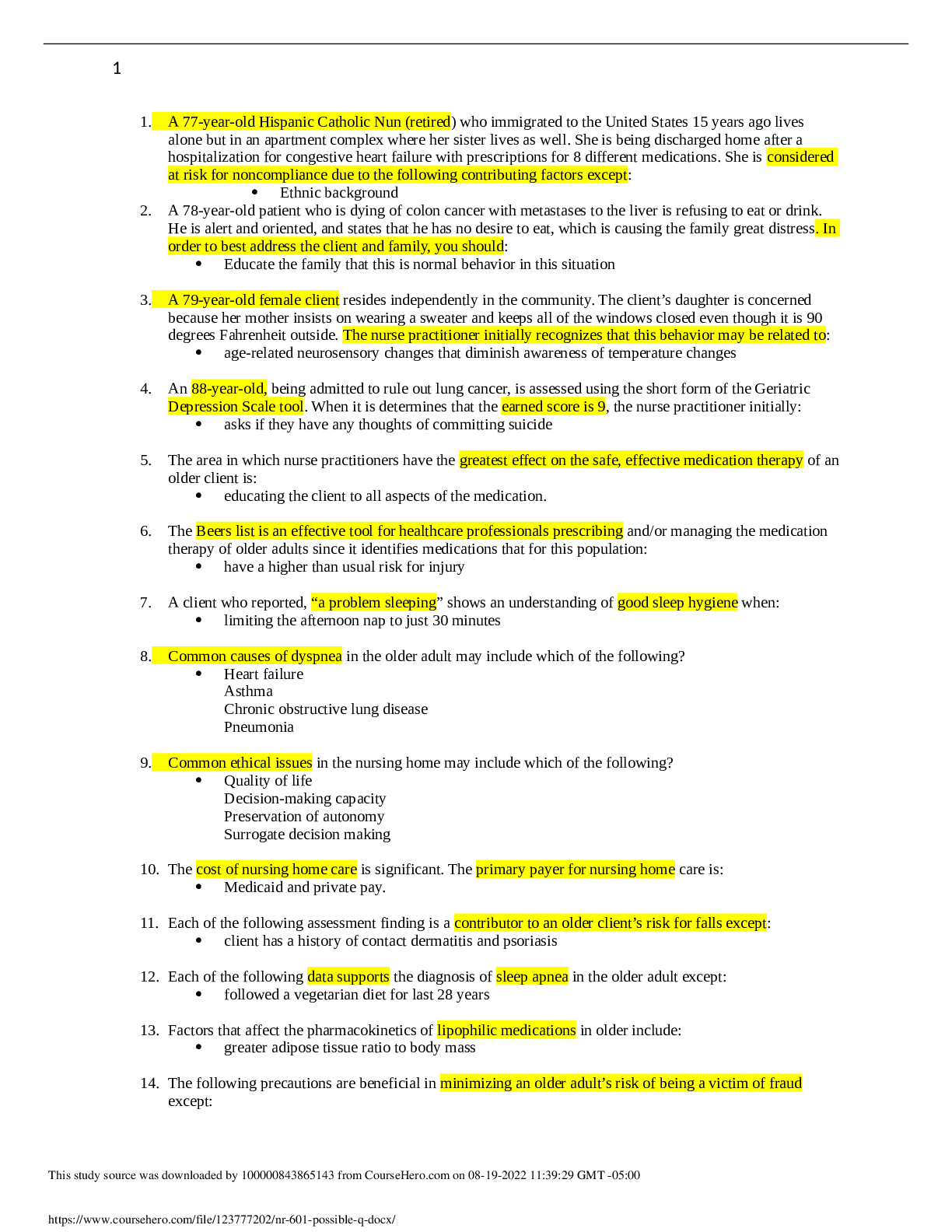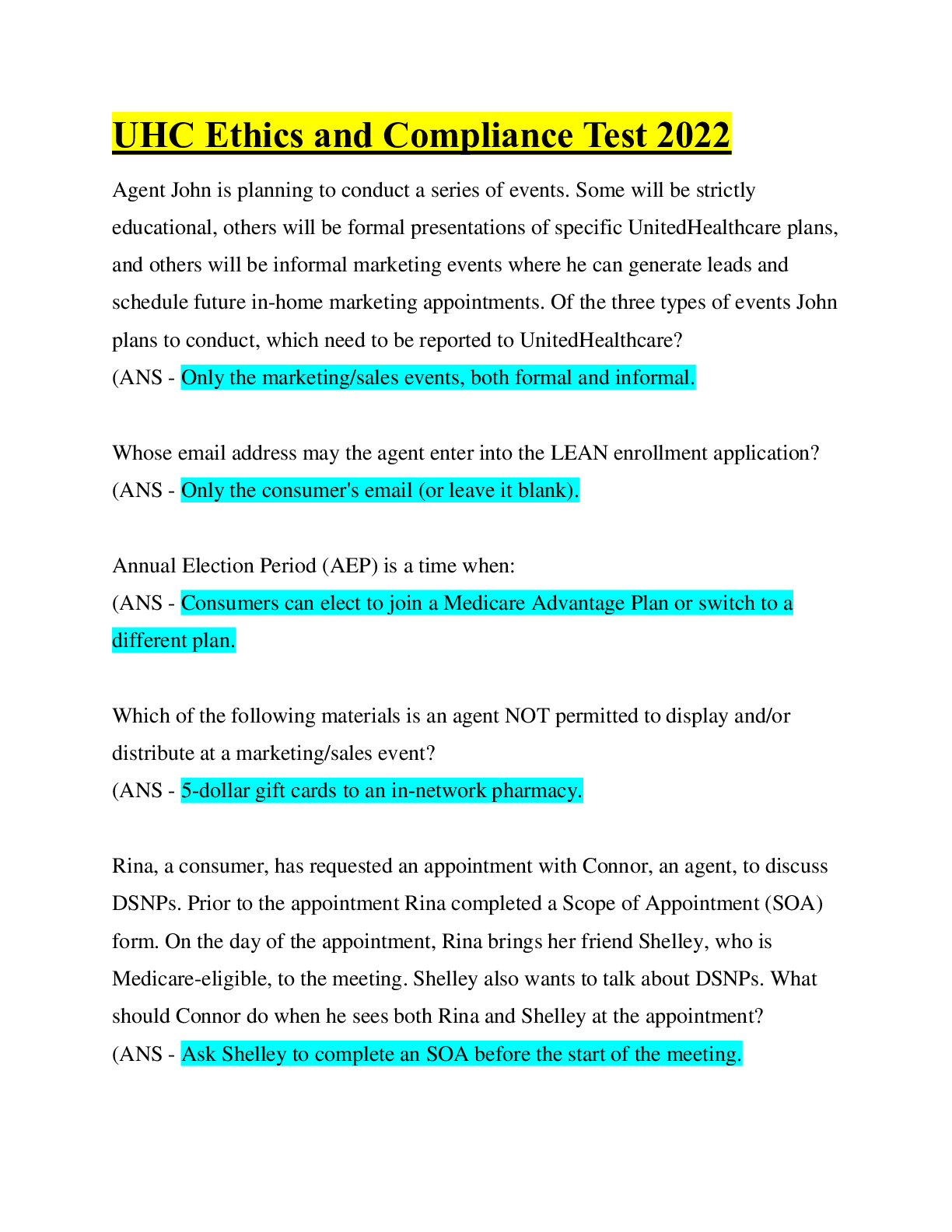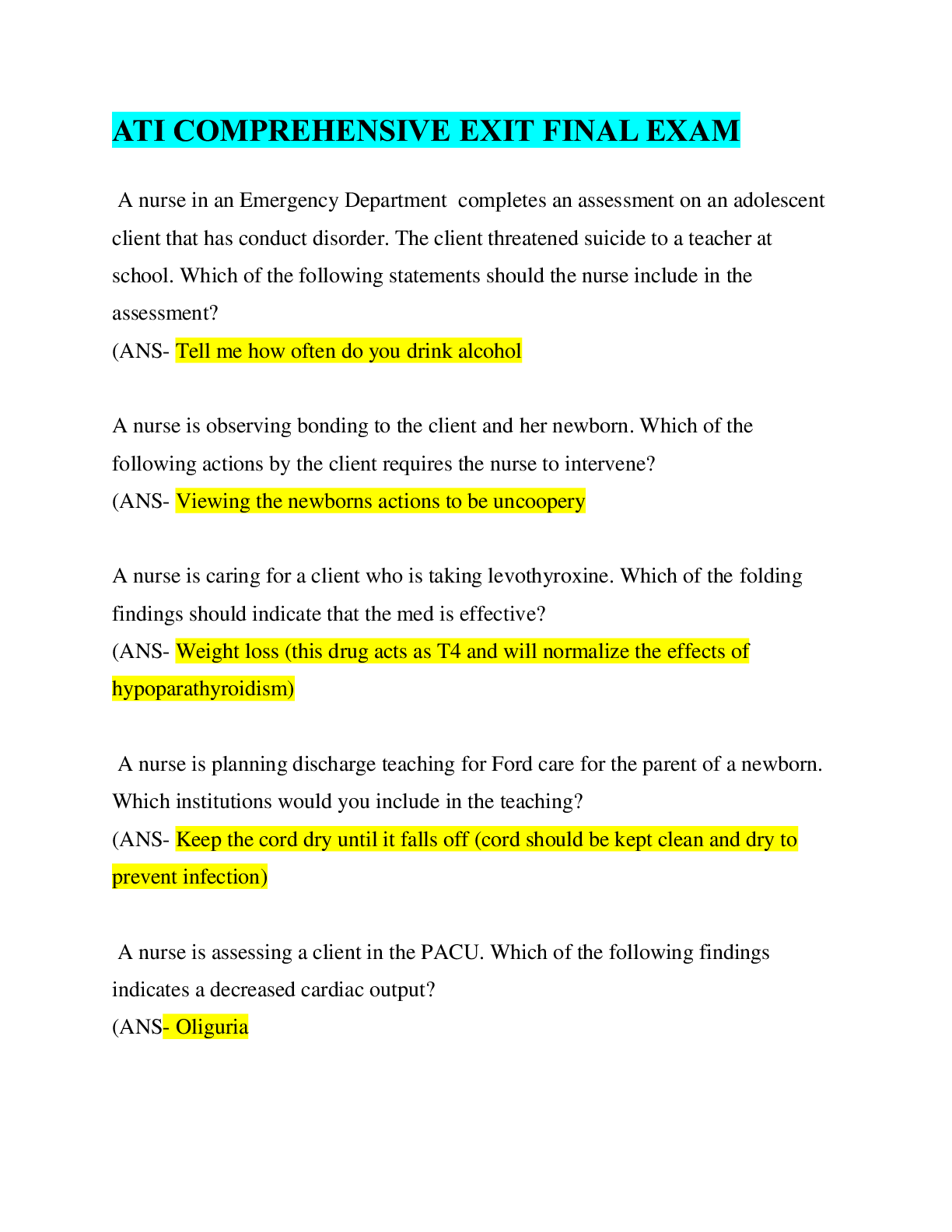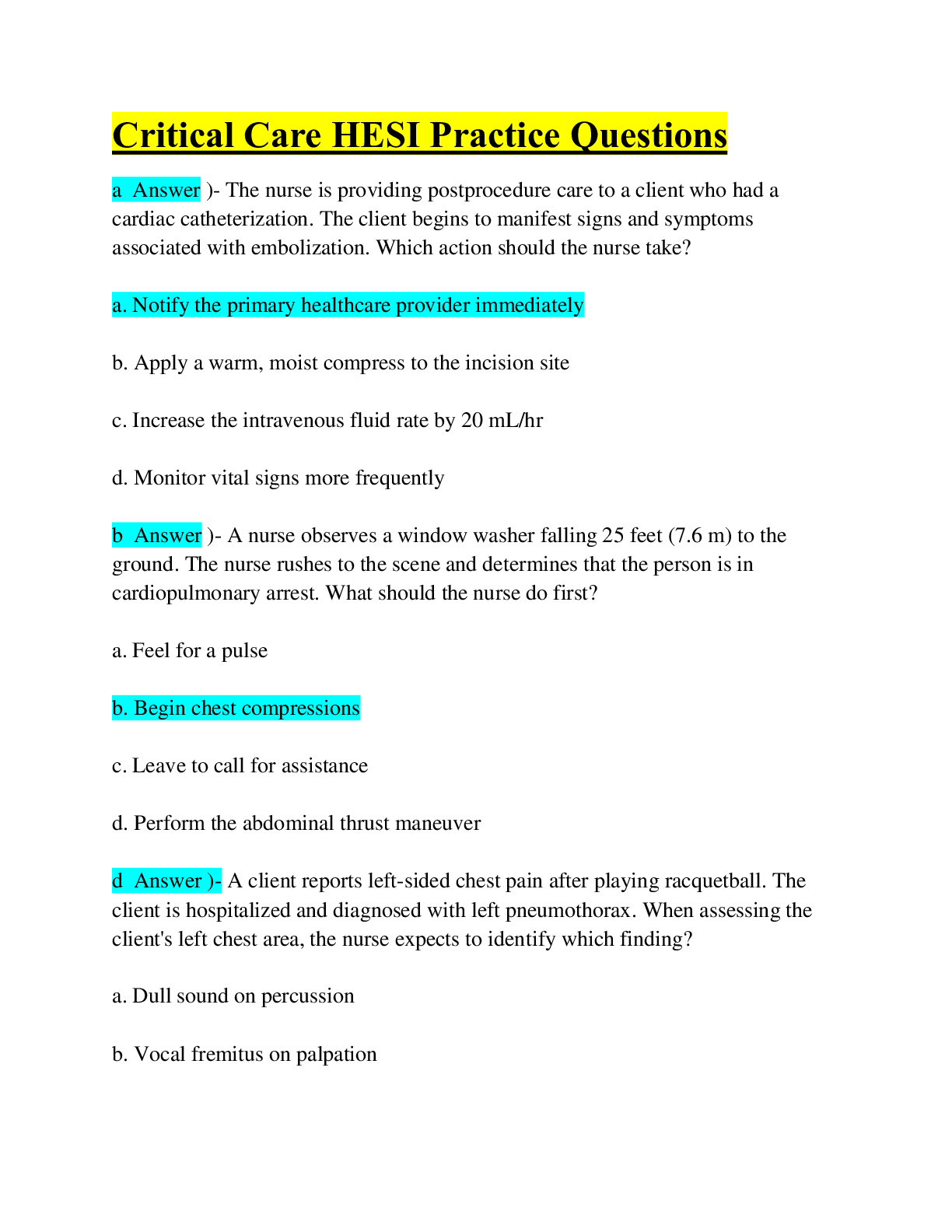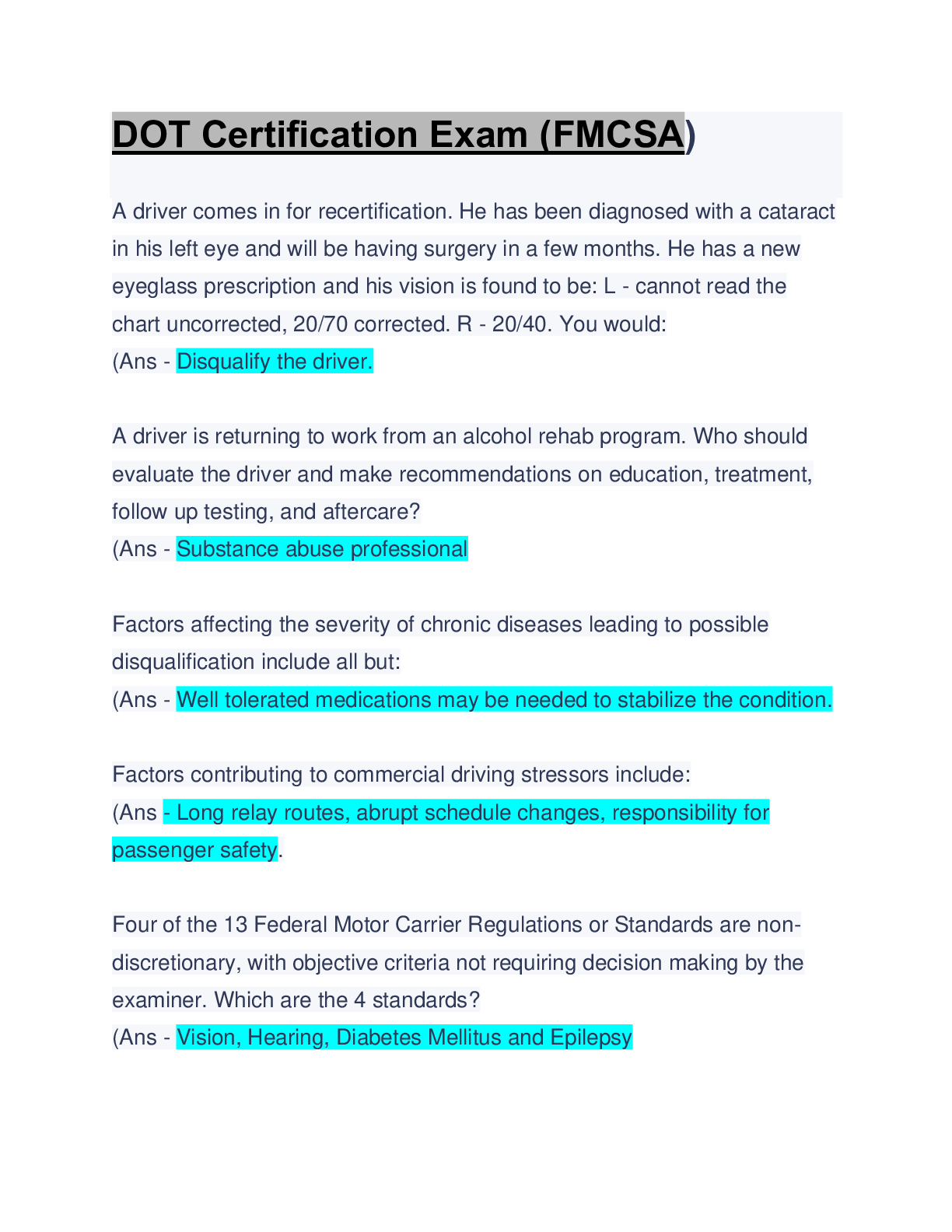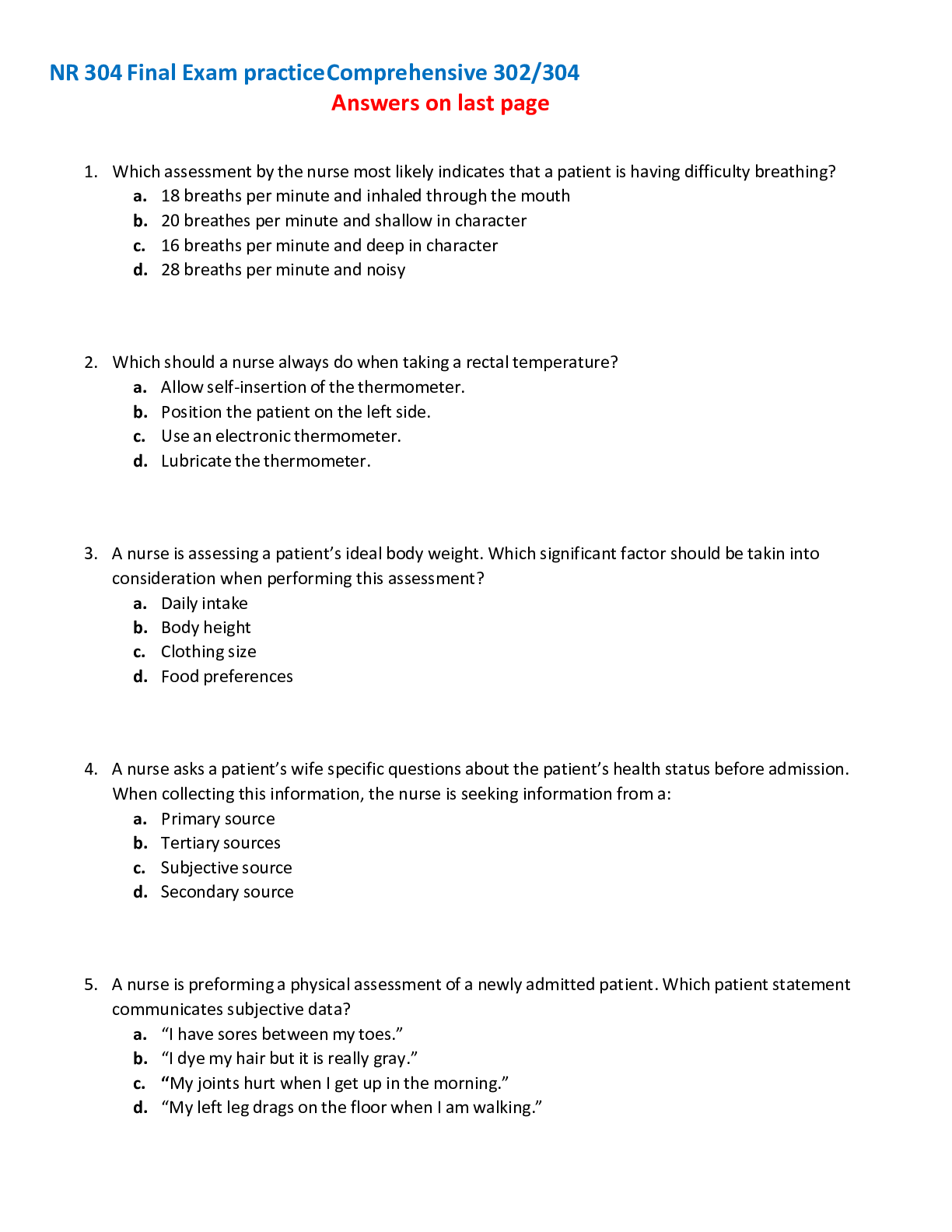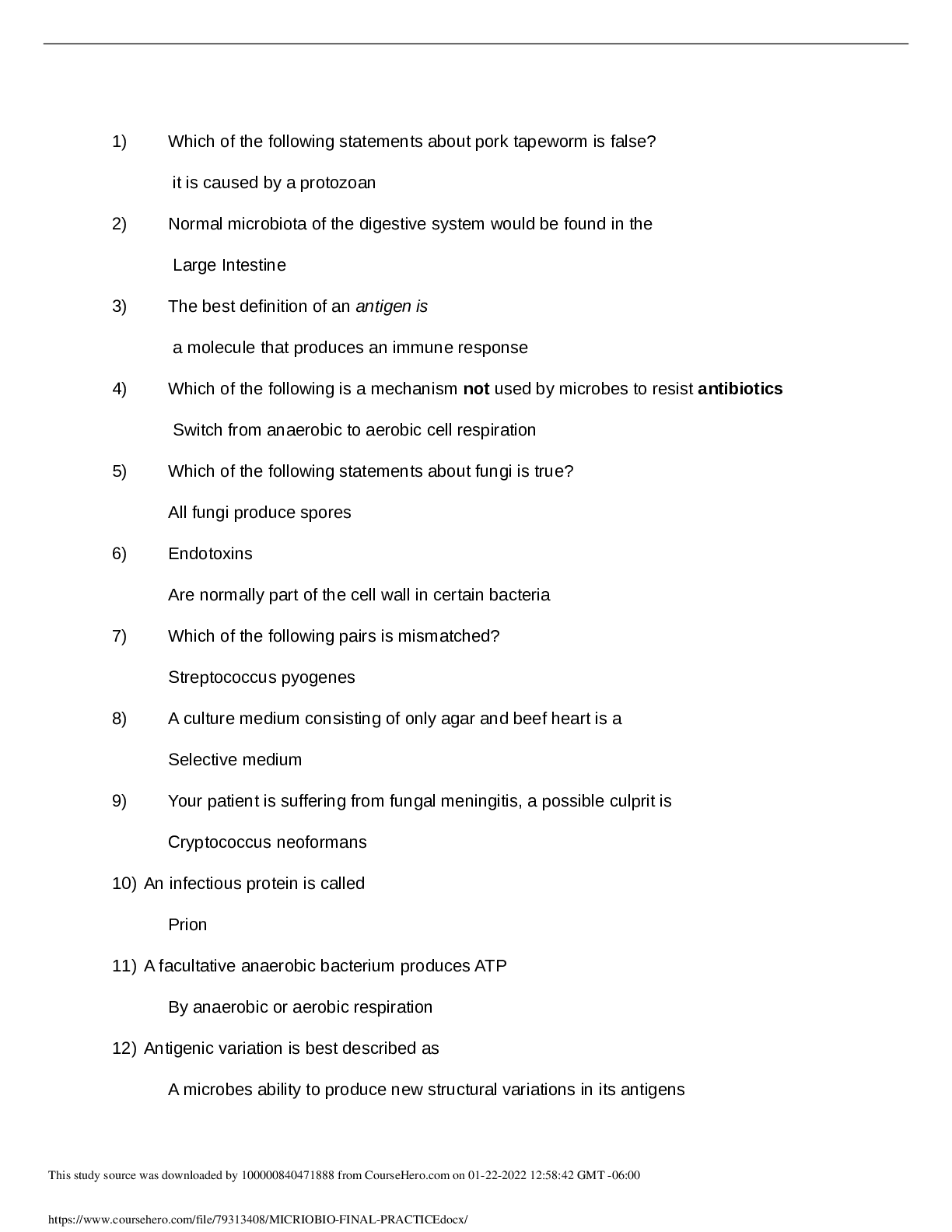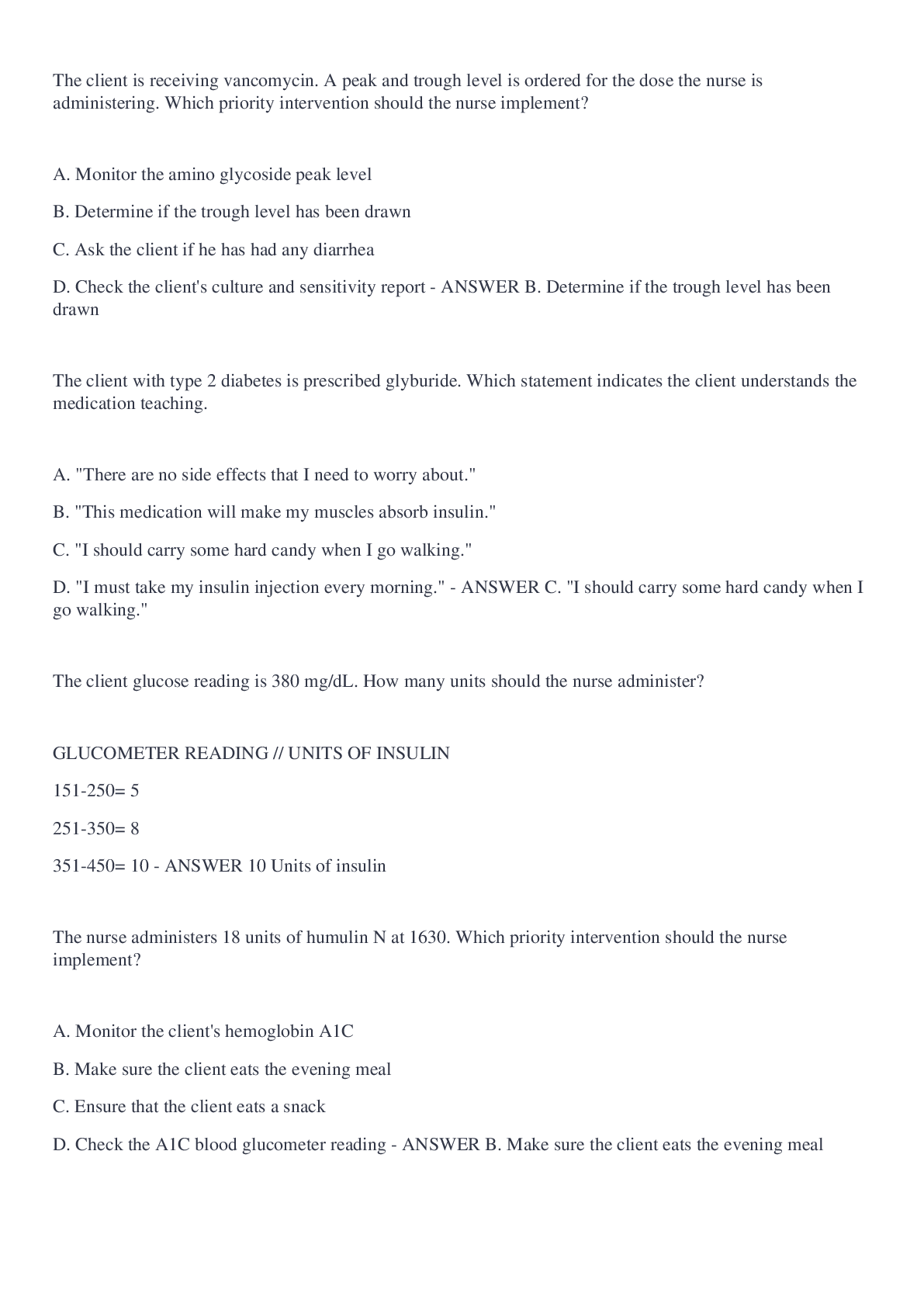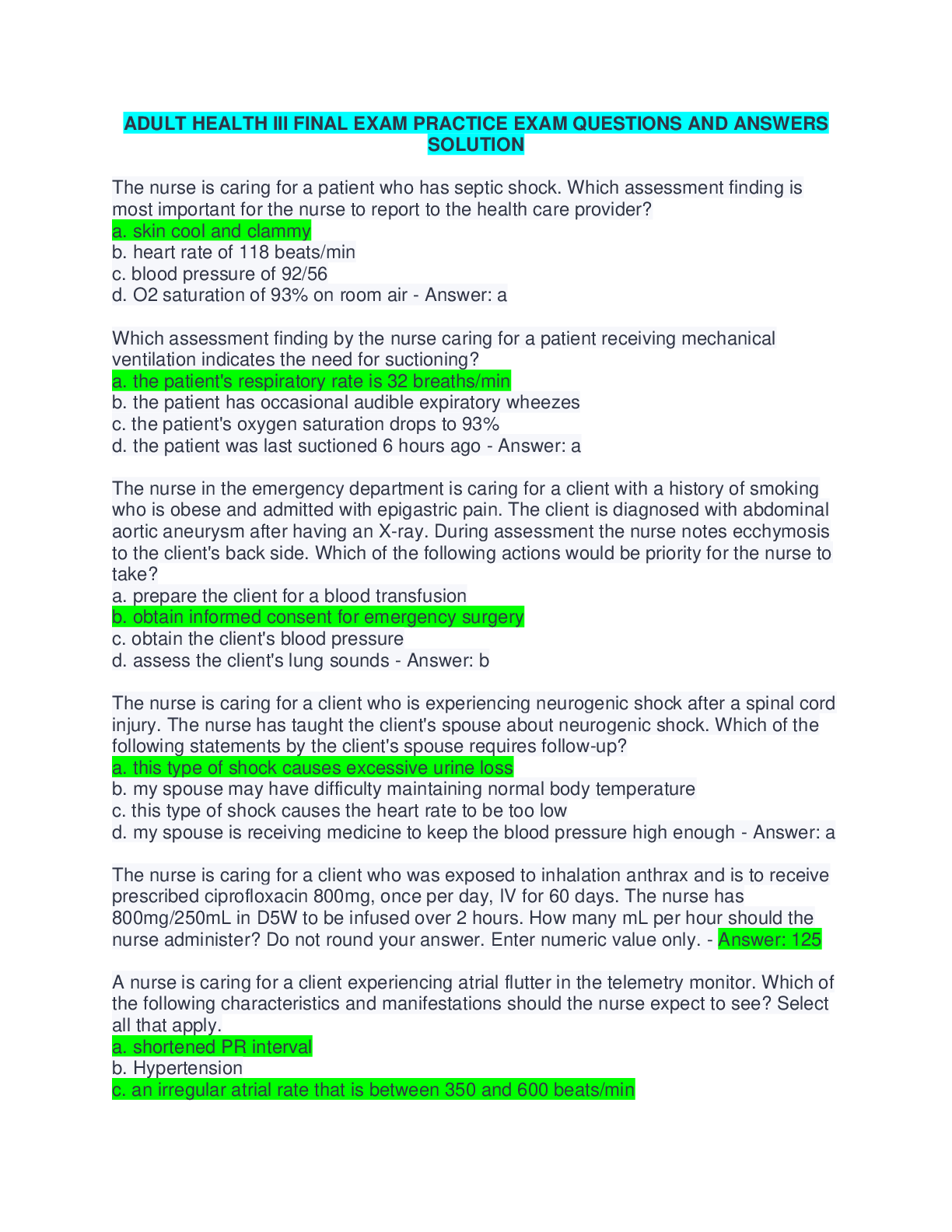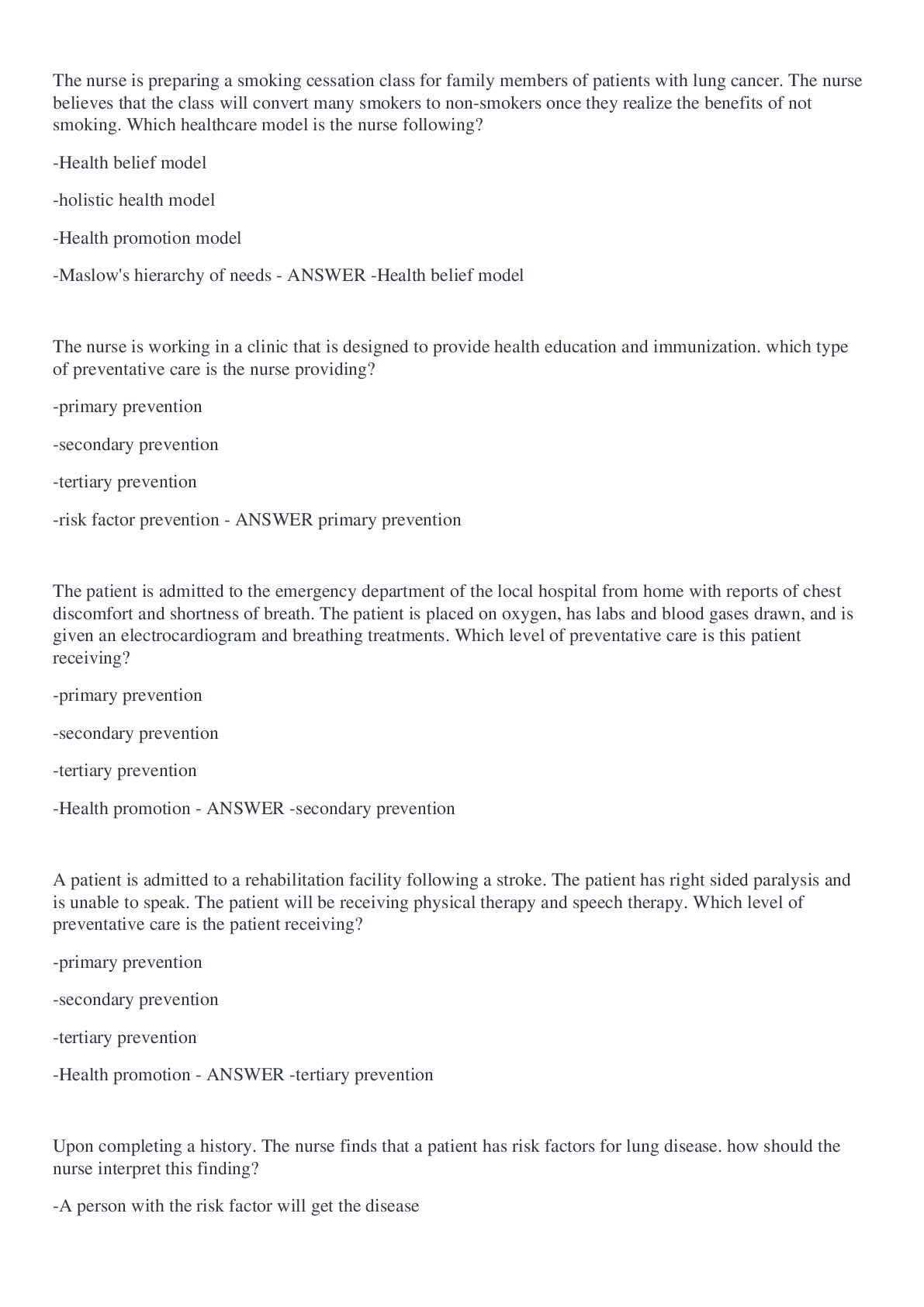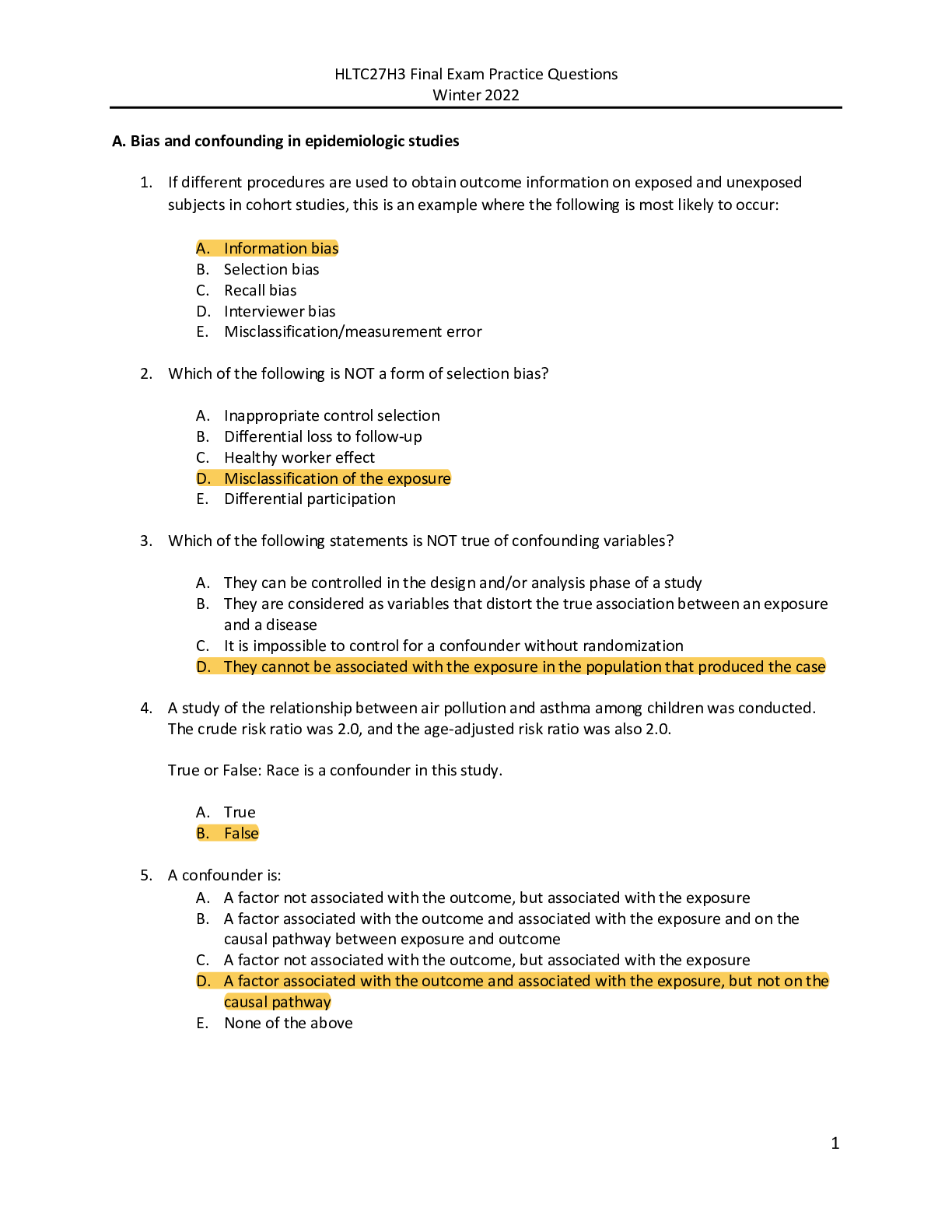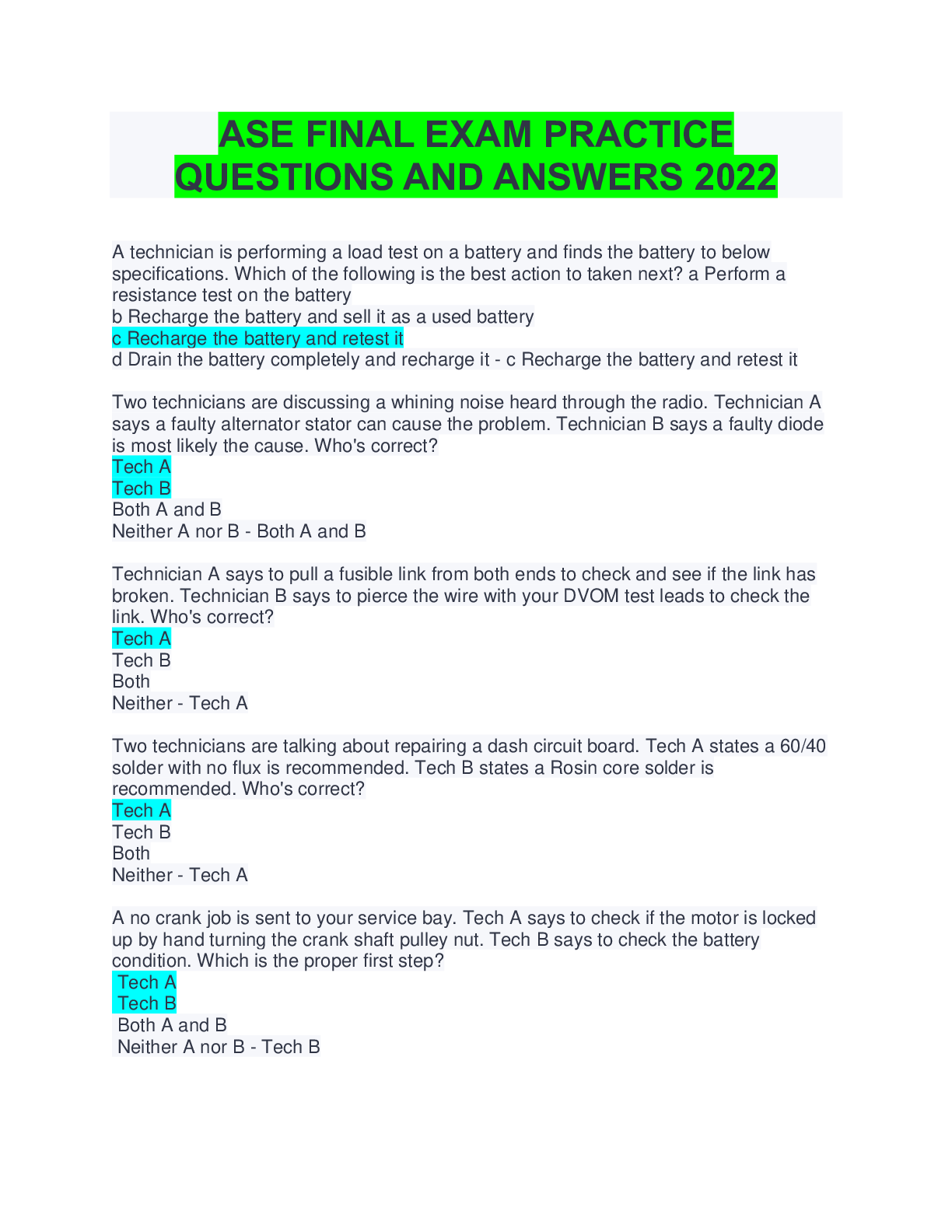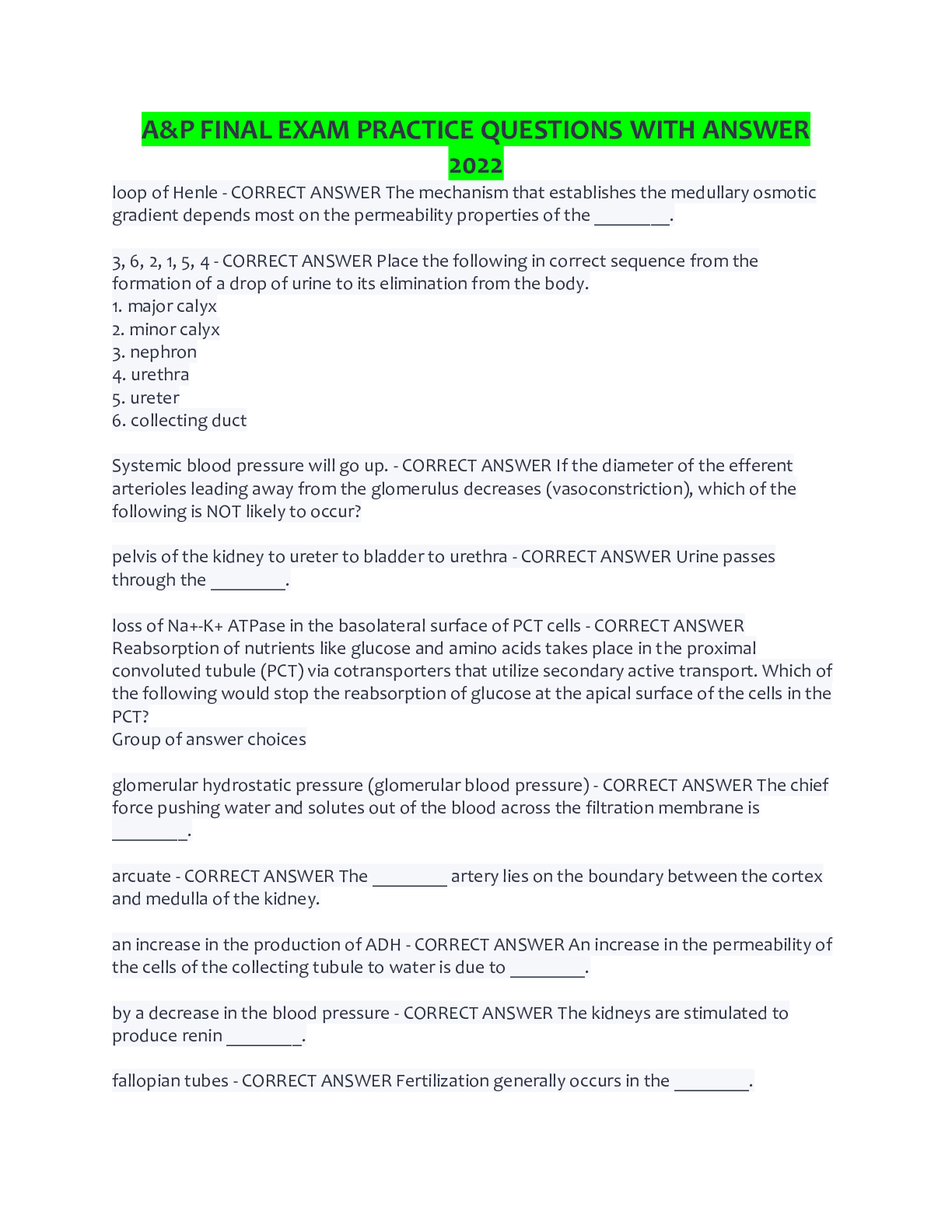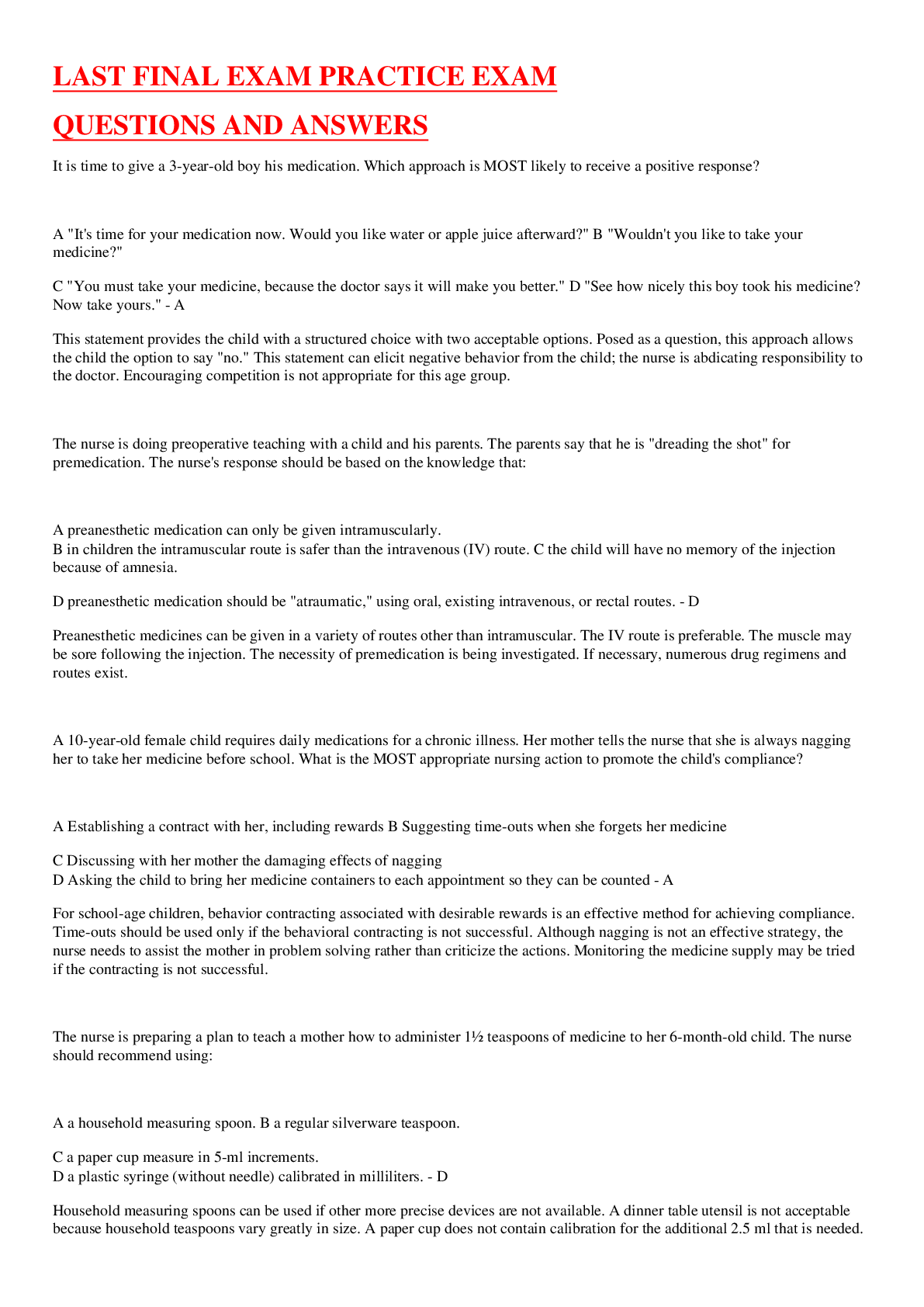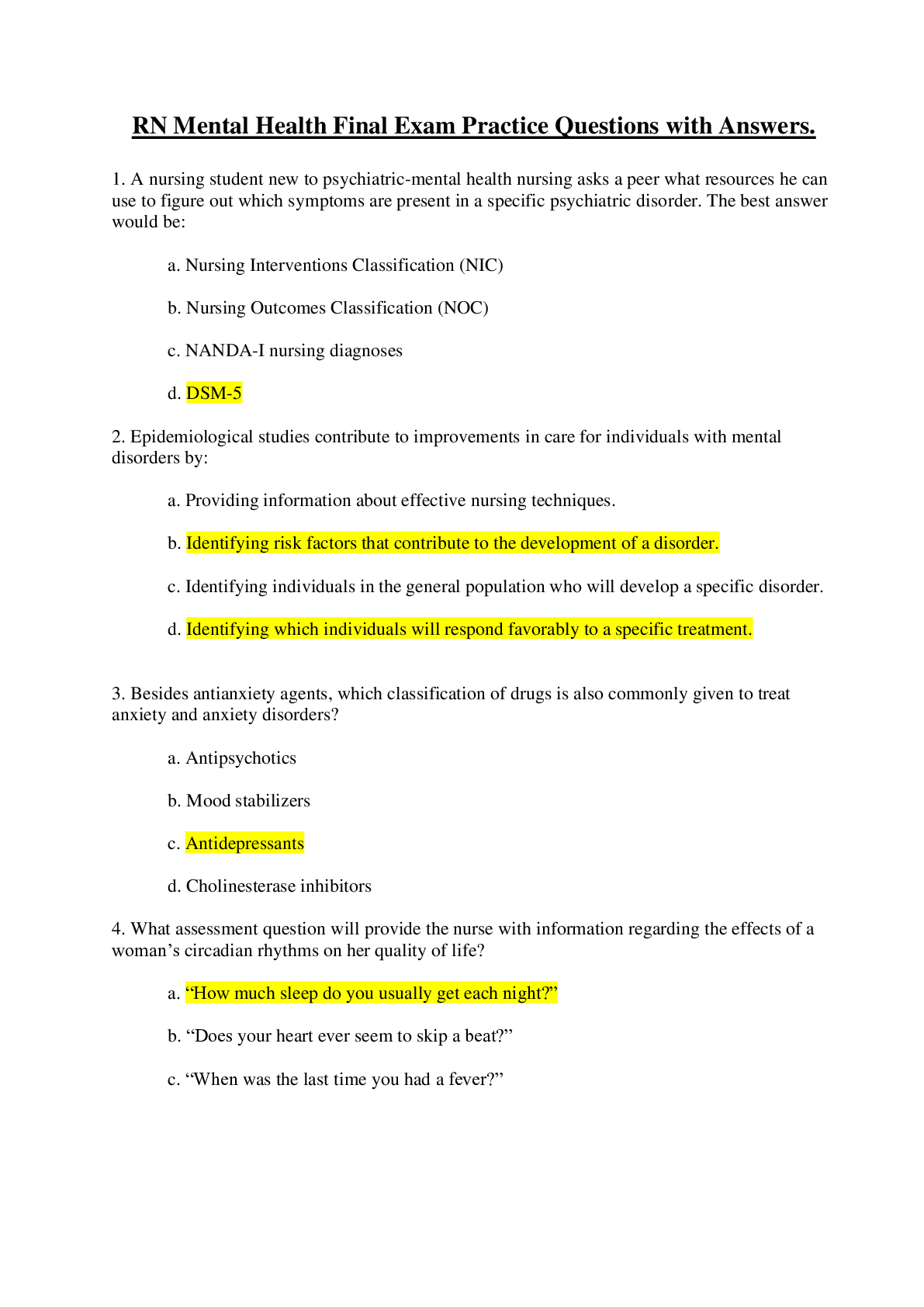Health Care > EXAM > NCLEX Final Exam Practice Questions & Answers/NCLEX TestBank/Latest Updated A+solution (All)
NCLEX Final Exam Practice Questions & Answers/NCLEX TestBank/Latest Updated A+solution
Document Content and Description Below
The nurse is participating at a health fair at the local mall giving influenza vaccines to senior citizens. What level of prevention is the nurse practicing? A) Primary prevention B) Secondary preve... ntion C) Tertiary prevention D) Quaternary prevention (ANS- Primary prevention is aimed at health promotion and includes health-education programs, immunizations, and physical and nutritional fitness activities. It can be provided to an individual and includes activities that focus on maintaining or improving the general health of individuals, families, and communities. It also includes specific protection such as immunization for influenza. A patient experienced a myocardial infarction 4 weeks ago and is currently participating in the daily cardiac rehabilitation sessions at the local fitness center. In what level of prevention is the patient participating? A) Primary prevention B) Secondary prevention C) Tertiary prevention D) Quaternary prevention (ANS- Tertiary prevention involves minimizing the effects of long-term disease or disability by interventions directed at preventing complications and deterioration following the myocardial infarction. Tertiary-prevention activities are directed at rehabilitation rather than diagnosis and treatment. Care at this level aims to help patients achieve as high a level of functioning as possible, despite the limitations caused by illness or impairment. This level of care is called preventive care because it involves preventing further disability or reduced functioning. Based on the transtheoretical model of change, what is the most appropriate response to a patient who states: "Me, exercise? I haven't done that since junior high gym class, and I hated it then!" A) "That's fine. Exercise is bad for you anyway." B) "OK. I want you to walk 3 miles 4 times a week, and I'll see you in 1 month." C) "I understand. Can you think of one reason why being more active would be helpful for you?" D) "I'd like you to ride your bike 3 times this week and eat at least four fruits and vegetables every day." (ANS- The patient's response indicates that the patient is in the precontemplation stage and does not intend to change his behavior in the next 6 months. In this stage the patient is not interested in information about the behavior and may be defensive when confronted with it. Asking an open-ended question may stimulate the patient to identify a reason to begin a behavior change. Nurses are challenged to motivate and facilitate change in health behavior when working with individuals. A patient comes to the local health clinic and states: "I've noticed how many people are out walking in my neighborhood. Is walking good for you?" What is the best response to help the patient through the stages of change for exercise? A) "Walking is OK. I really think running is better." B) "Yes, walking is great exercise. Do you think you could go for a 5-minute walk next week?" C) "Yes, I want you to begin walking. Walk for 30 minutes every day and start to eat more fruits and vegetables." D) "They probably aren't walking fast enough or far enough. You need to spend at least 45 minutes if you are going to do any good." (ANS- The patient's response indicates that the patient is in the contemplative state, possibly intending to make a behavior change within the next 6 months. The nurse's statement reinforces the behavior and provides a specific goal for the patient to begin a walking plan. A male patient has been laid off from his construction job and has many unpaid bills. He is going through a divorce from his marriage of 15 years and has been seeing his pastor to help him through this difficult time. He does not have a primary health care provider because he has never really been sick and his parents never took him to the physician when he was a child. Which external variables influence the patient's health practices? (Select all that apply.) A) Difficulty paying his bills B) Seeing his pastor as a means of support C) Family practice of not routinely seeing a health care provider D) Stress from the divorce and the loss of a job (ANS- External factors impacting health practices include family beliefs and economic impact. How patients' families use health care services generally affects their health practices. Their perceptions of the serious nature of diseases and their history of preventive care behaviors (or lack of them) influence how patients will think about health. Economic variables may affect a patient's level of health by increasing the risk for disease and influencing how or at what point the patient enters the health care system. The nurse is conducting a home visit with an older adult couple. She assesses that the lighting in the home is poor and there are throw rugs throughout the home and a low footstool in the living room. She discusses removing the rugs and footstool and improving the lighting with the couple. The nurse is addressing which level of need according to Maslow? A) Physiological B) Safety and security C) Love and belonging D) Self-actualization (ANS- The teaching addresses the need for safety and security. The throw rugs, low lighting, and low stool are hazards that can cause falls in the elderly. Preventing falls is a priority safety issue for older adults. When taking care of patients, the nurse routinely asks them if they take any vitamins or herbal medications, encourages family members to bring in music that the patient likes to help the patient relax, and frequently prays with her patients if that is important to them. The nurse is practicing which model? A) Holistic B) Health belief C) Transtheoretical D) Health promotion (ANS- The nurse is using a holistic model of care that considers emotional and spiritual well-being and other dimensions of an individual to be important aspects of physical wellness. The holistic health model of nursing attempts to create conditions that promote optimal health. Nurses using the holistic nursing model recognize the natural healing abilities of the body and incorporate complementary and alternative interventions such as music therapy, reminiscence, relaxation therapy, therapeutic touch, and guided imagery because they are effective, economical, noninvasive, nonpharmacological complements to traditional medical care. When illness occurs, different attitudes about it cause people to react in different ways. What do medical sociologists call this reaction to illness? A) Health belief B) Illness behavior C) Health promotion D) Illness prevention (ANS- Illness behavior involves how people monitor their bodies, define and interpret their symptoms, take remedial actions, and use the resources in the health care system. Personal history, social situations, social norms, and past experiences can affect illness behavior. A patient at the community clinic asks the nurse about health promotion activities that she can do because she is concerned about getting diabetes mellitus since her grandfather and father both have the disease. This statement reflects that the patient is in what stage of the health belief model? A) Perceived threat of the disease B) Likelihood of taking preventive health action C) Analysis of perceived benefits of preventive action D) Perceived susceptibility to the disease. (ANS- The health belief model addresses the relationship between a person's beliefs and behaviors. It provides a way of understanding and predicting how patients will behave in relation to their health and how they will comply with health care therapies. In the perceived susceptibility to the disease phase, the patient recognizes the familial link to the disease. A nurse works in a special care unit for children with severe immunology problems and is caring for a 3-year-old boy from Greece. The boy's father is with him while his mother and sister are back in Greece. The nurse is having difficulty communicating with the father. What action does the nurse take? A) Care for the boy as she would any other patient B) Ask the manager to talk with the father and keep him out of the unit C) Have another nurse care for the boy because maybe that nurse will do better with the father D) Search for help with interpretation and understanding of the cultural differences by contacting someone from the local Greek community (ANS- The nurse needs to understand how the Greek culture impacts the father's health beliefs and communication with health care providers. Cultural variables must be incorporated into the child's plan of care. Cultural background influences beliefs, values, and customs. It influences the approach to the health care system, personal health practices, and the nurse-patient relationship. Cultural background may also influence an individual's beliefs about causes of illness and remedies or practices to restore health. If nurses are not aware of their own and other cultural patterns of behavior and language, they may not be able to recognize and understand a patient's behavior and beliefs and may have difficulty interacting with the patient. A patient with a 20-year history of diabetes mellitus had a lower leg amputation. Which statement made by the patient indicates that he is experiencing a problem with body image? A) "I just don't have any energy to get out of bed in the morning." B) "I've been attending church regularly with my wife since I got out of the hospital." C) "My wife has taken over paying the bills since I've been in the hospital." D) "I don't go out very much because everyone stares at me." (ANS- The amputation resulted in a change in physical appearance that caused a change in body image. Reactions of patients and families to changes in body image depend on the type of changes (e.g., loss of a limb or an organ), their adaptive capacity, the rate at which changes take place, and the support services available. When a change in body image such as results from a leg amputation occurs, the patient generally adjusts in the following phases: shock, withdrawal, acknowledgment, acceptance, and rehabilitation. The patient's statement indicates he is in the stage of withdrawal. The patient states she joined a fitness club and attends the aerobics class three nights a week. The patient is in what stage of behavioral change? A) Precontemplation B) Contemplation C) Preparation D) Action (ANS- The patient is in the action stage of behavioral change. In this stage the patient is actively engaged in strategies to change behavior. This stage may last up to 6 months. [Show More]
Last updated: 1 year ago
Preview 1 out of 184 pages

Reviews( 0 )
Document information
Connected school, study & course
About the document
Uploaded On
Aug 27, 2022
Number of pages
184
Written in
Additional information
This document has been written for:
Uploaded
Aug 27, 2022
Downloads
0
Views
30



